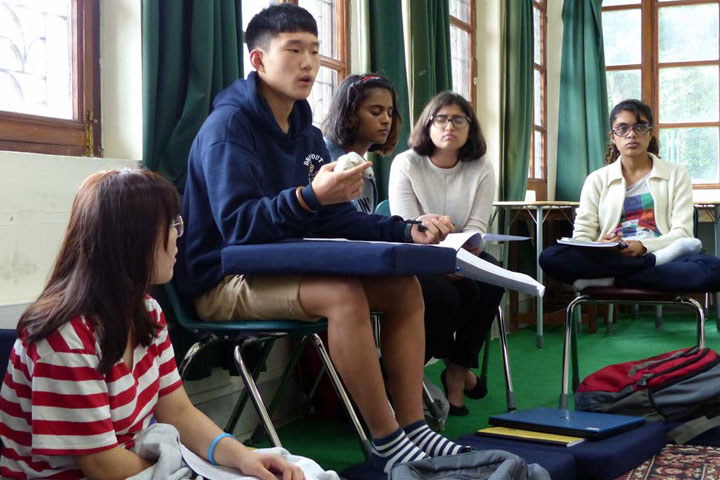
08 Aug Democratic learning
A Harkness discussion on Truman Capote’s In Cold Blood
The concept of non-fiction as great literature is something Grade 11 English students are exploring with this summer’s reading, Truman Capote’s In Cold Blood. In this graded discussion they are considering the notion of truth in the American author’s seminal true crime novel.
Students discussed an interview that they had read and annotated in which George Plimpton asks Truman Capote about Capote’s creation of the first non-fiction novel, his voluminous research on the murder of the Clutter family in Kansas in the 1950s, and his complicated relationship to the killers themselves. This discussion style is called a Harkness discussion, a format originally conceived at Exeter Academy in the 1930s that bears resemblance to the Socratic method.
"When I first formed my theories concerning the nonfiction novel, many people with whom I discussed the matter were unsympathetic. They felt that what I proposed, a narrative form that employed all the techniques of fictional art but was nevertheless immaculately factual, was little more than a literary solution for fatigued novelists suffering from "failure of imagination." Personally, I felt that this attitude represented a "failure of imagination" on their part." Truman Capote
The Harkness table, Harkness method, or Harkness discussion is a teaching and learning method involving students seated in a large, oval configuration to discuss ideas in an open-minded environment with minimal teacher intervention. The method’s name comes from the oil magnate and philanthropist Edward Harkness, a graduate of St. Paul’s School, who presented the school with a monetary gift in 1930. It has been adopted in numerous schools, where small class-size makes it effective. Harkness described its use as follows:
“What I have in mind is [a classroom] where [students] could sit around a table with a teacher who would talk with them and instruct them by a sort of tutorial or conference method, where [each student] would feel encouraged to speak up. This would be a real revolution in methods.”
Harkness discussions share general principles and goals that accompany the method, regardless of subject matter. The main goal is to encourage students to come up with ideas of their own, learn good reasoning and discussion skills. Depending on style, the teacher may interact very little, interjecting only to guide the discussion.
Kirsten Pike, Upper Years English Teacher
[vc_masonry_media_grid gap=”2″ grid_id=”vc_gid:1502169113043-3eeb9881-3810-7″ include=”26002,25997,26011,26004,26003,25998,25996,26005,26001,26000,25994,25995″]






No Comments